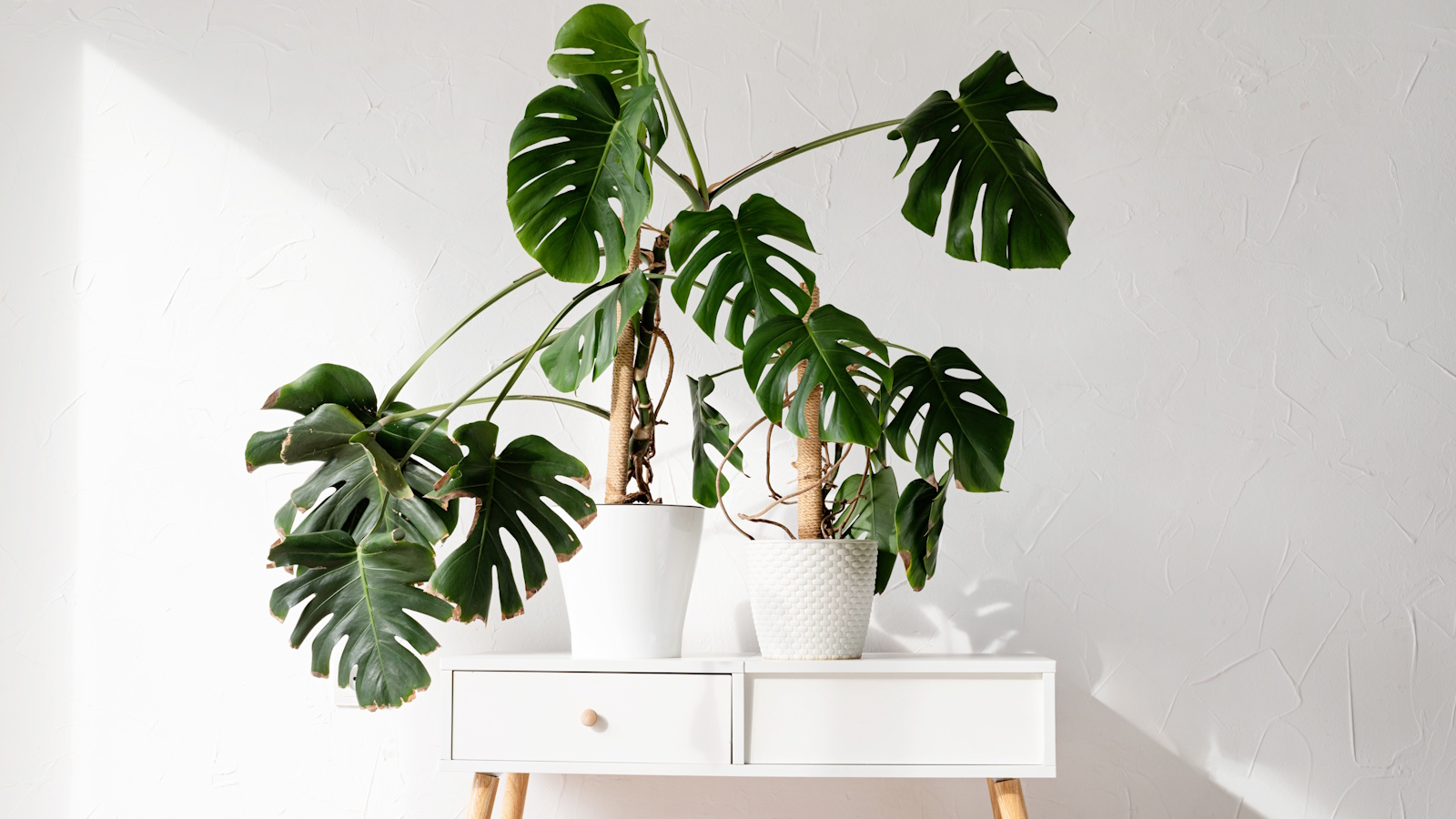
My Monstera deliciosa is my largest houseplant and the one I'm most proud of. Since first purchasing it a few years ago, I have nurtured and cared for it, and it now stands around double the height and spread it first was. The only problem? I made the mistake of not training it with a support pole sooner, leaving it a little unruly and almost unmanageable.
The good news is, just like caring a monstera training it with a plant support is straightforward - even if it feels like a mammoth task to complete. Plus, in my experience, seeing this jungle plant tidied up leaves your space feeling less cluttered, and it better supports the health of your plant.
You can use a range of items to train an overgrown monstera. I used moss poles for mine, but it is also possible to use a houseplant trellis, or another alternative. Here, I share my top tips to help you get your monstera in shape.

How to train an overgrown monstera
There are multiple reasons you may be seeking to train an overgrown monstera. Like me, it might be because your plant is spreading far and taking up a bit too much room in your home.
It could also be because you've noticed your monstera is turning yellow from too little light as a result of unsupported leaves hanging low to the ground. You might also be concerned that the weight of drooping, large monstera leaves will snap its beautiful stems.
Whatever the case, I promise your monstera will look perkier once you follow the same simple five steps I did:
5 steps to train a monstera up a plant support
There are just a few tools from your plant care kit you will need to train an overgrown monstera:
- Pruning shears (from Amazon)
- Plant support, like a moss pole (from Amazon)
- Plant ties, string, or twine (from Amazon)
1. Prune damaged monstera leaves
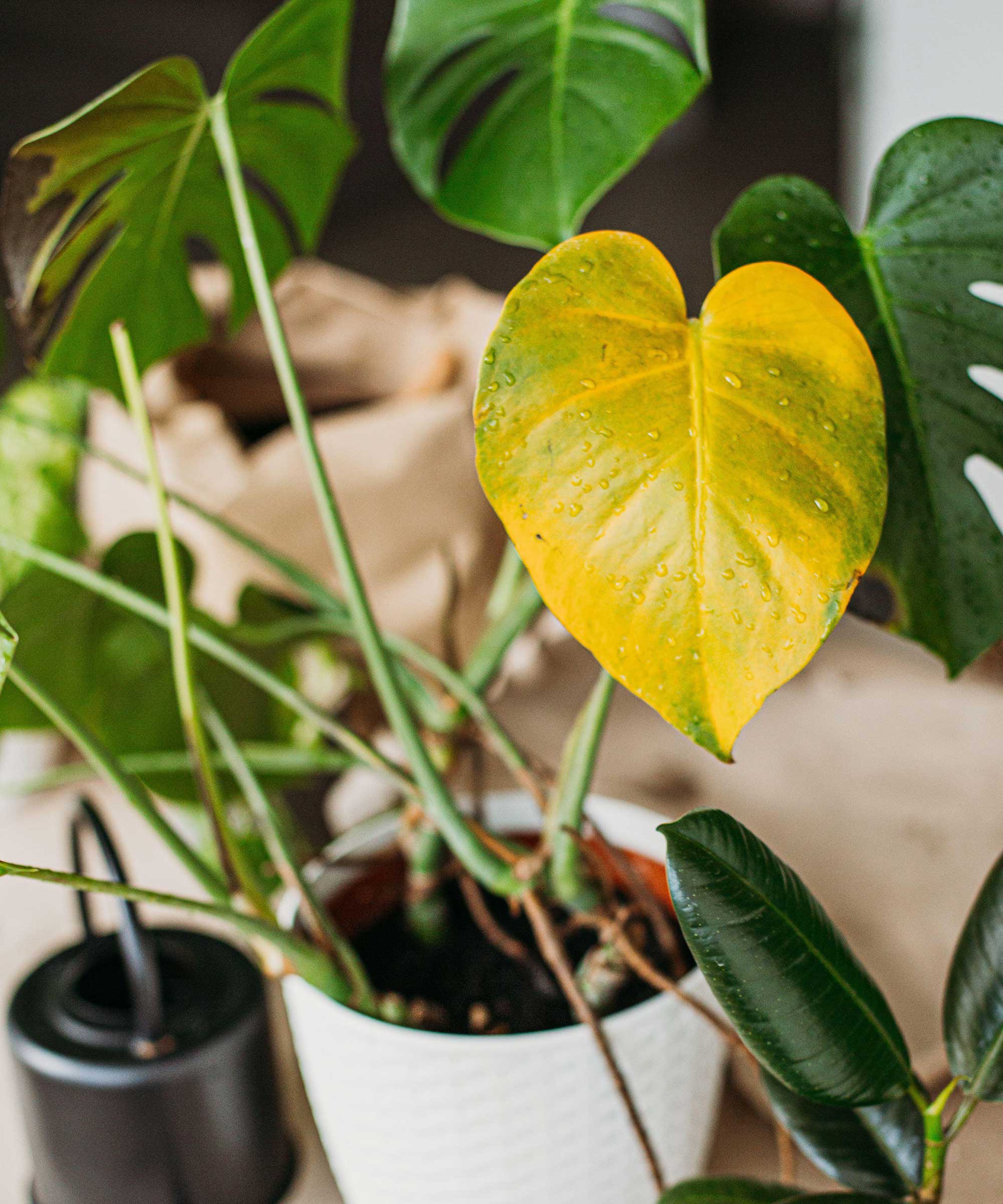
If your monstera is need of training, it's likely it isn't looking pristine. In my case, my monstera was drooping and some leaves yellowed. This is largely due to the lack of light for the leaves hanging lower down to the ground.
Before attempting to train an overgrown monstera, you therefore need to first prune your monstera to a healthier condition. This means removing any damaged leaves that aren't going to turn green again.
Use essential pruning tools - like these houseplant shears from Amazon - and cut at the base of the damaged leaf's stem. This will allow your monstera to direct all of its energy to the healthy foliage, as well as push out new growth.
This is a good opportunity to also check your plant for any common houseplant pests and deal with it accordingly.
If your monstera only has droopy, green leaves, you don't need to worry so much about pruning. I found that training my monstera with a plant support to provide more light perked them back up again.
2. Map out the plant supports you need
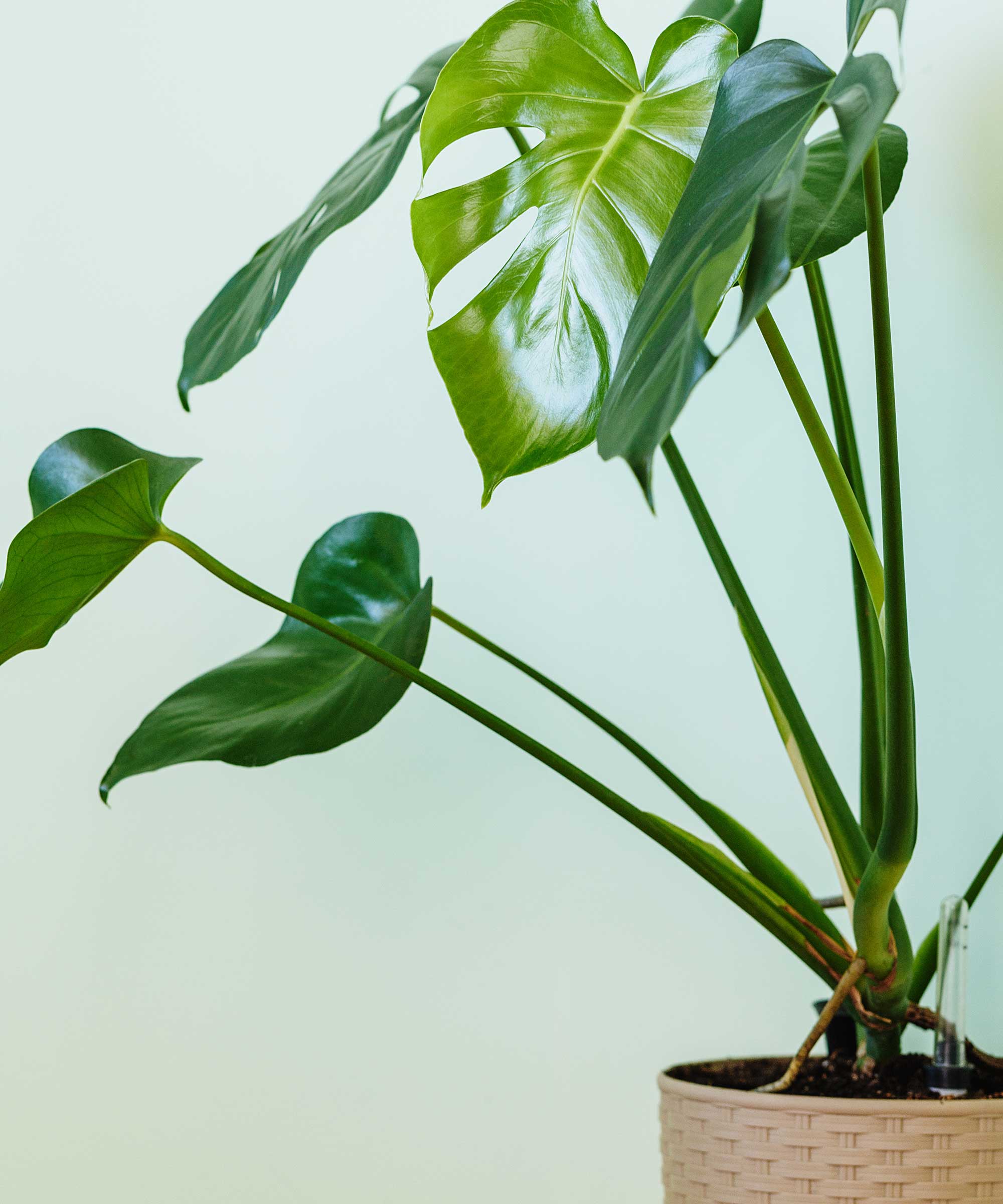
Depending on the size of your monstera, and more importantly its spread, you may find you need more than one plant support. This was the case for my monstera, which was spreading in multiple directions.
For this reason, I took some time to map out where I needed plant supports and which stems to attach. I then measured the height needed, making sure to accommodate for future growth.
I needed two plant supports, and so I purchased two of these moss poles from Amazon. I prefer using moss poles because you can bend them to the unique shape of a monstera's structure, plus they increase humidity for houseplants when you wet them.
However, you can also use a houseplant trellis (from Amazon) for a prettier option, or even bamboo plant stakes (from Amazon). The key is to ensure your plant support is a sufficient size for your growing monstera.
3. Position the plant support
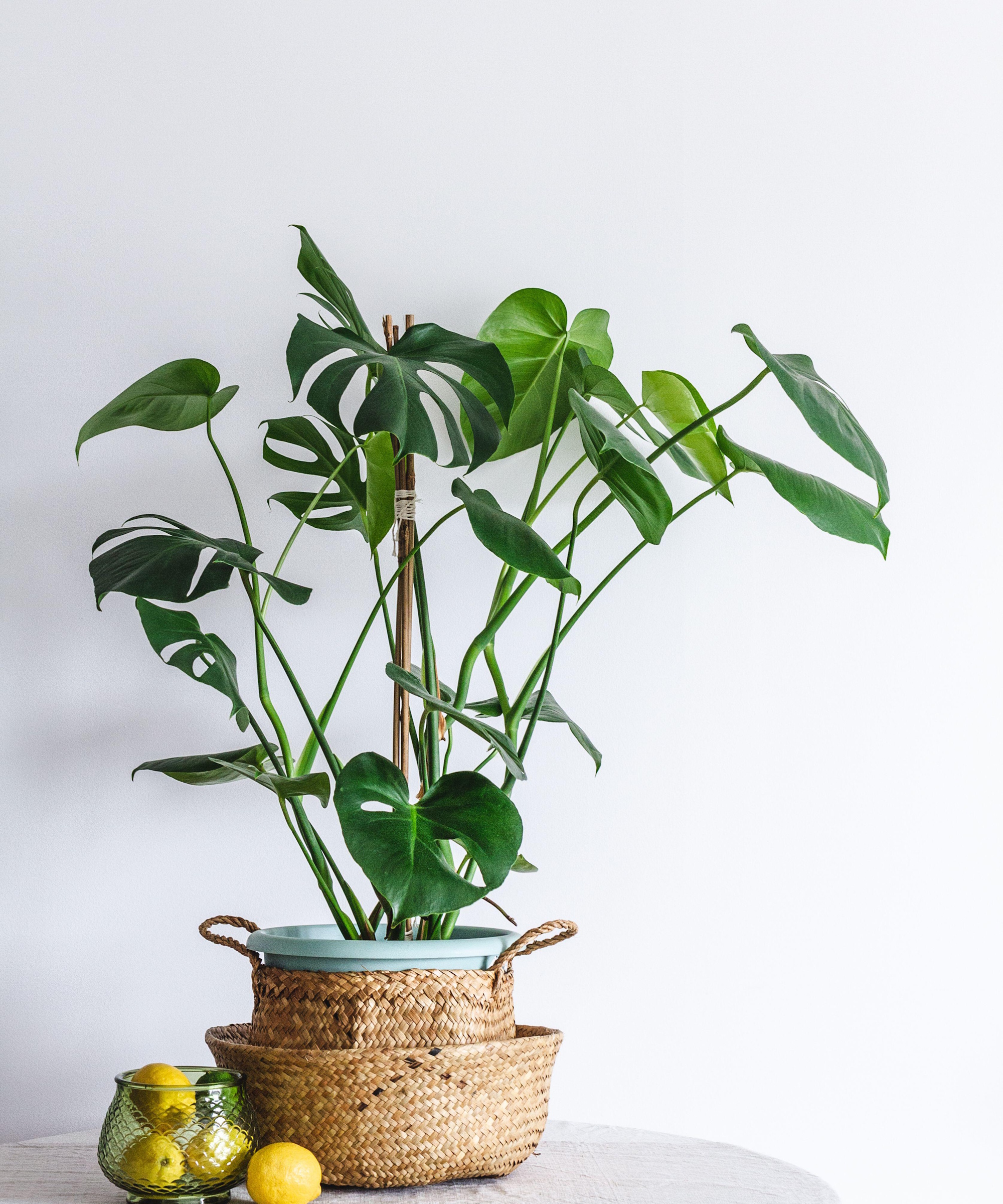
Having identified where to place the plant supports, I then positioned them in the soil of my monstera's pot. Take care when doing this not to damage any roots - you might find digging a hole for the support first is helpful.
As mentioned, a moss pole can be molded to the shape of your monstera, while a trellis or bamboo stake will be more rigid.
I gently bent the moss poles to support the structure of my monstera, aiming to have each stem in need of support in close proximity to a pole.
This takes some time and you'll likely need to play around with it for a while. I ended up carefully moving some stems to sit above the pole, while others stayed beneath.
You can use houseplant potting mix (from Amazon) to secure the plant supports in place - or make your own monstera potting mix. I also used this as an opportunity to replenish my monstera's soil with a new layer of potting mix, offering a boost of essential plant nutrients.
4. Attach monstera stems to the plant support
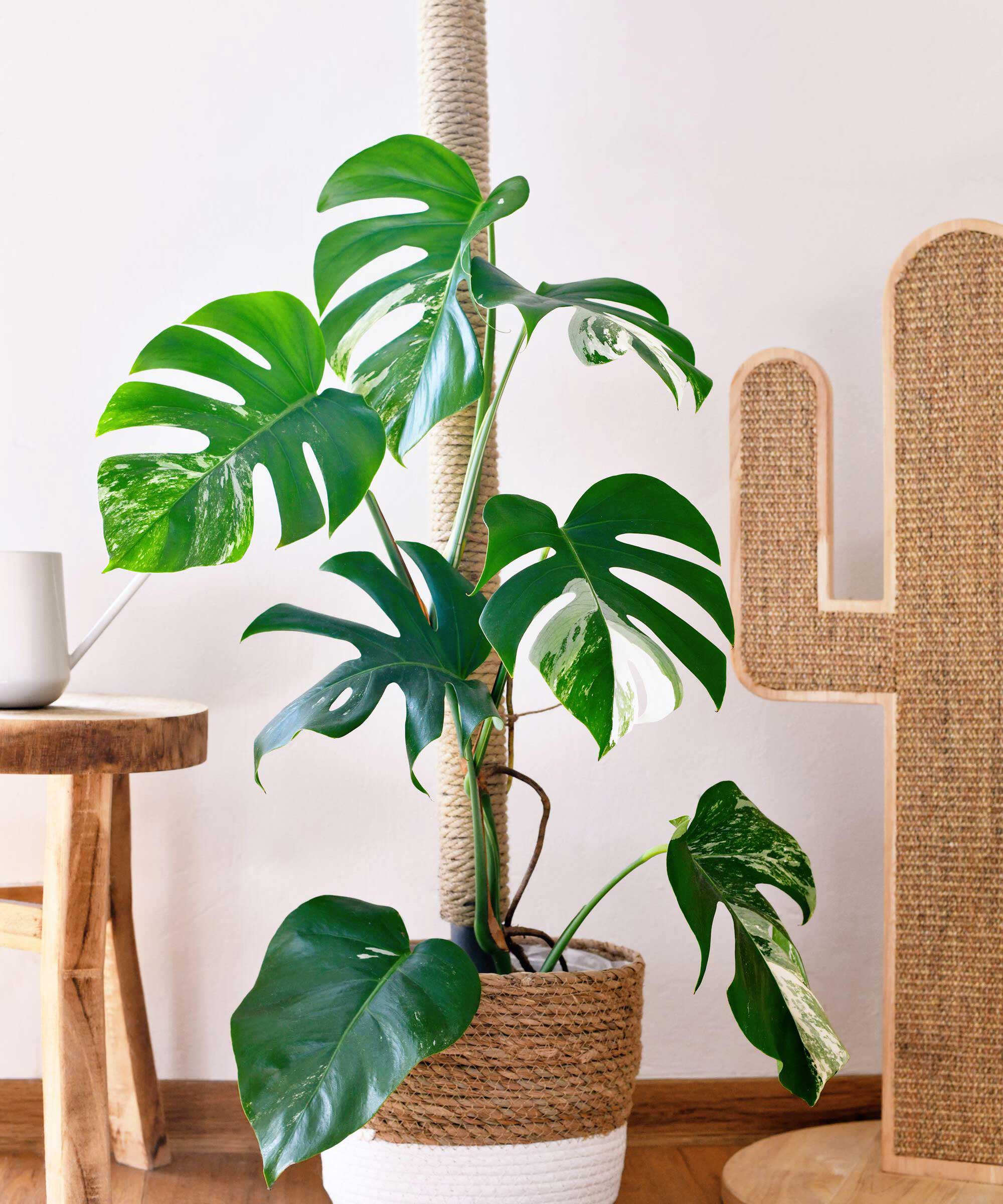
With your plant supports positioned and an idea of which stems to support where, you can start attaching the stems using plant ties, string, or twine.
I used twine (from Walmart) because I like the subtle look it has, blending in with the color of the moss pole.
You need to take care not to tighten the ties too much, which could cut into the stems of your monstera. A good test is whether you can lift the stem away from its tie. If you aren't able to, you will need to loosen it.
Take your time when doing this and make sure to step back to observe your work. Your monstera will be on show in your home, so you need to be happy with how it looks, almost as if it was a piece of décor.
Don't forget to check that you haven't neglected any lower leaves that are hidden from the light - they'll benefit most from being in a higher position.
Over time, you may notice your monstera's aerial roots attach to the plant support. This is what they use to climb trees in their native jungle habitat, and what you're aiming to recreate by training your monstera.
If there are some unruly monstera aerial roots you don't like the look of, you can cut them away without causing harm to your plant. Simply using sharp scissors (from Walmart) to prune these houseplant roots.
5. Water your monstera deeply
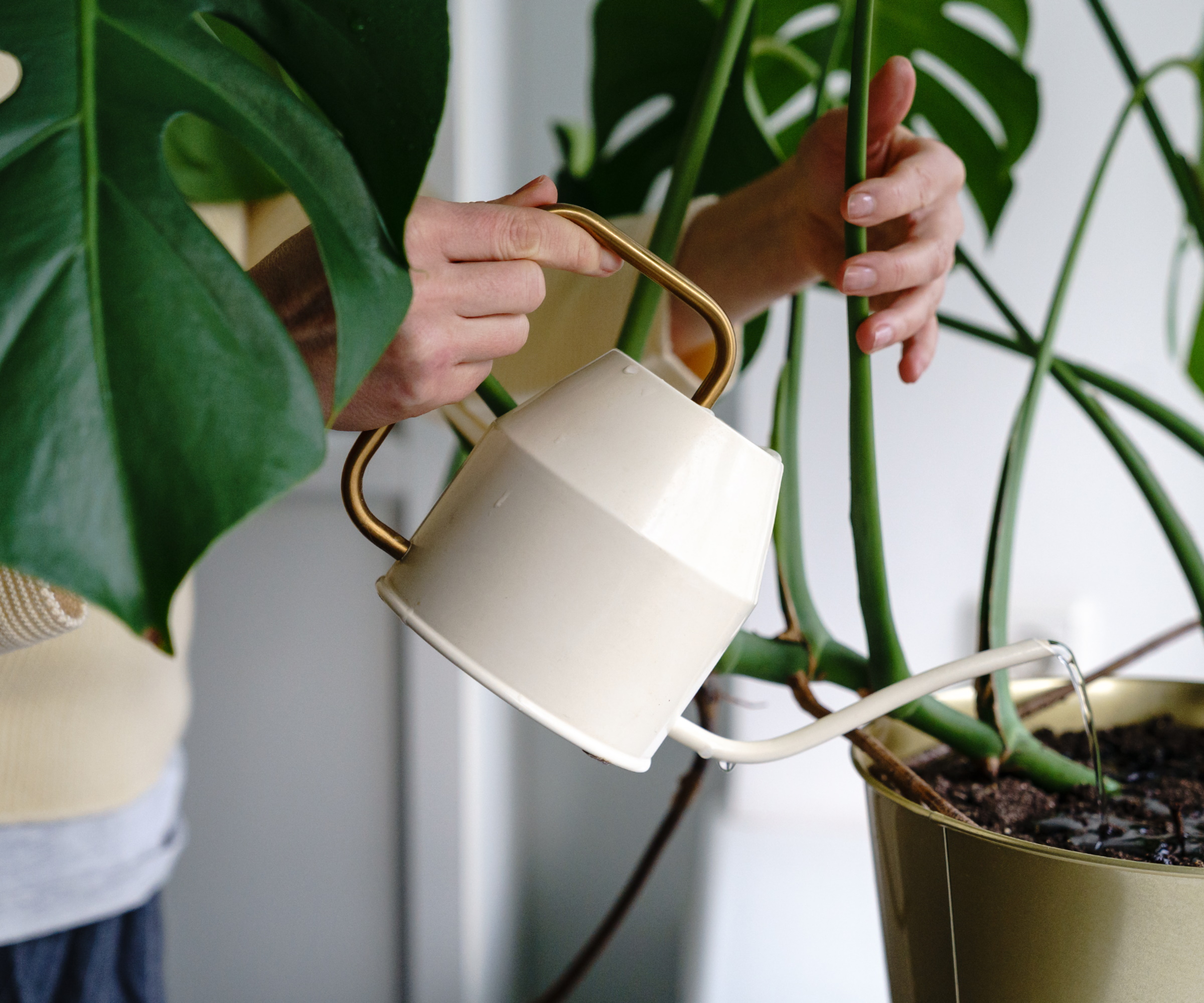
The final thing I did when training my overgrown monstera was water my houseplant well. This helps settle it into its new arrangement and provides your plant with some nourishment.
Of course, take care not to overwater your monstera which could lead to houseplant root rot or discoloring leaves. Use this soil moisture meter from Amazon to identify when it needs a top up, only watering when the top two inches have dried out.
If you are training your plant during spring and summer, when it is actively growing, it can also be beneficial to fertilize your monstera for a boost of nutrients that encourage new growth.
FAQs
Do I need to replace my monstera's support pole?
You will only need to replace your monstera's support pole as the plant grows bigger or if the pole becomes damaged. Monsteras grow in an upward direction, climbing their plant support and eventually reaching the top of it. At this point, you will need to replace it with a taller plant pole.
To give my monstera the full treatment, I also cleaned the houseplant leaves to remove dust and make them shiny. I also repositioned it somewhere with plenty of bright light, now that its lower leaves are higher up to access it.
By doing all of these things, my monstera instantly looked much neater and has been thriving ever since.







